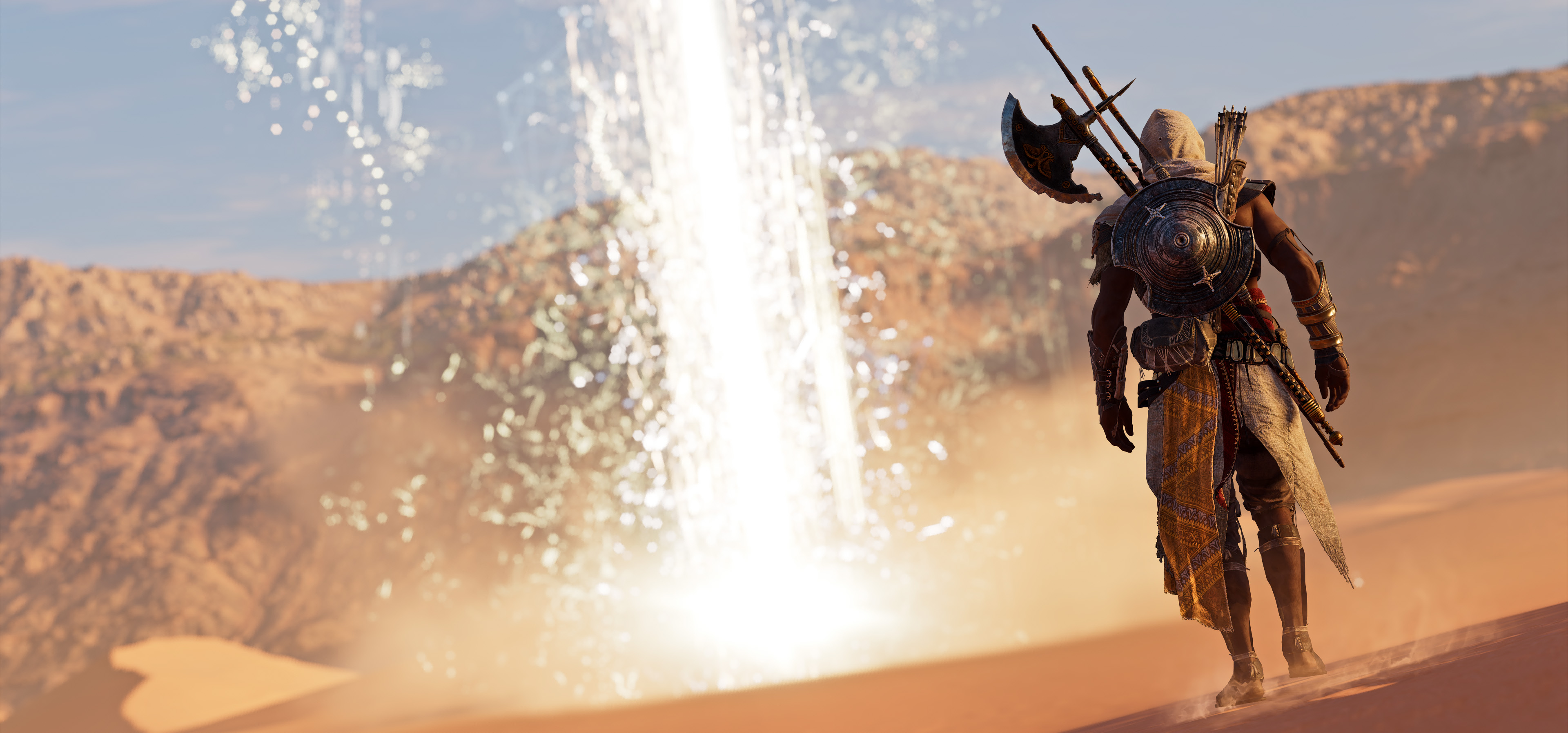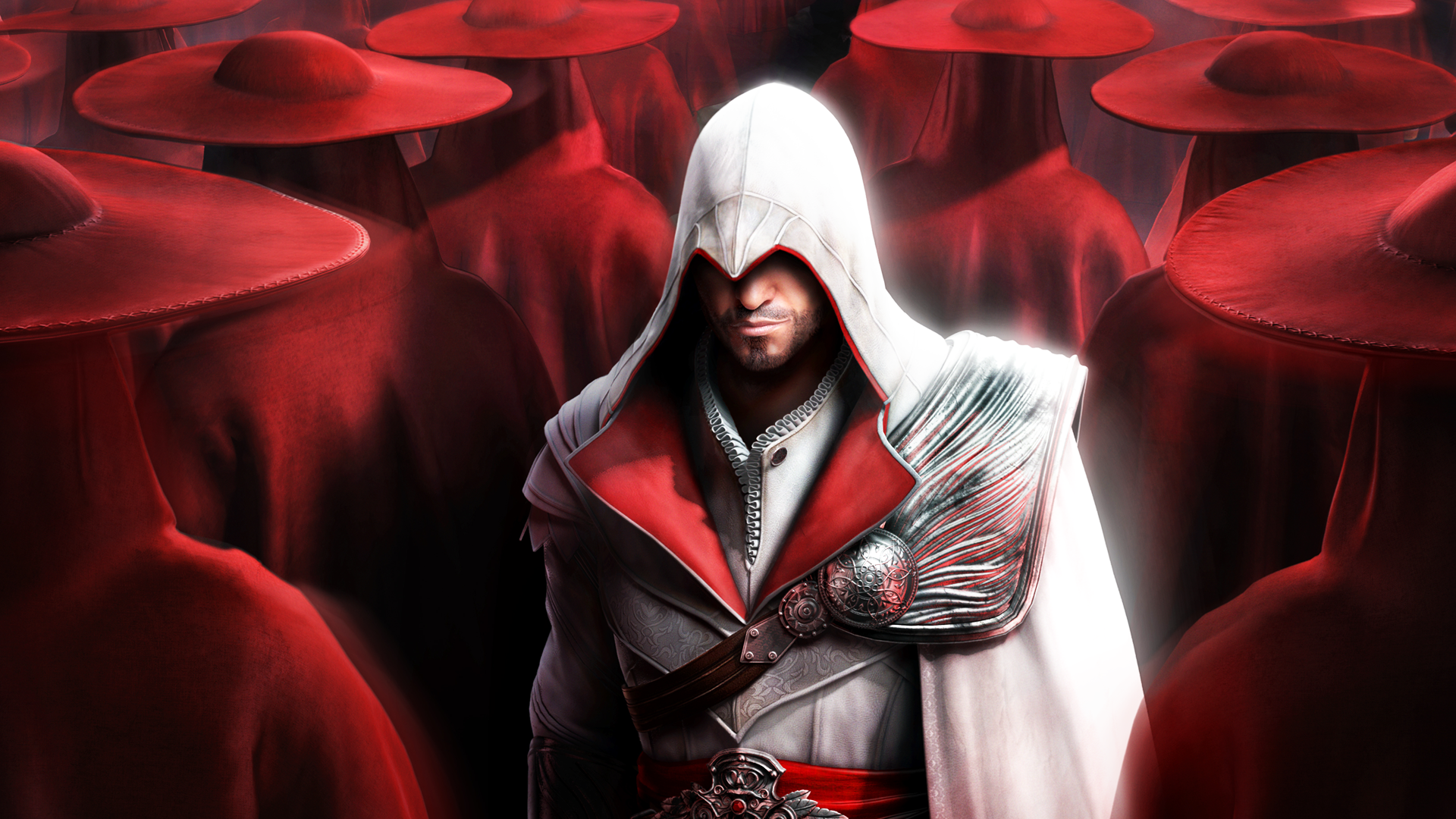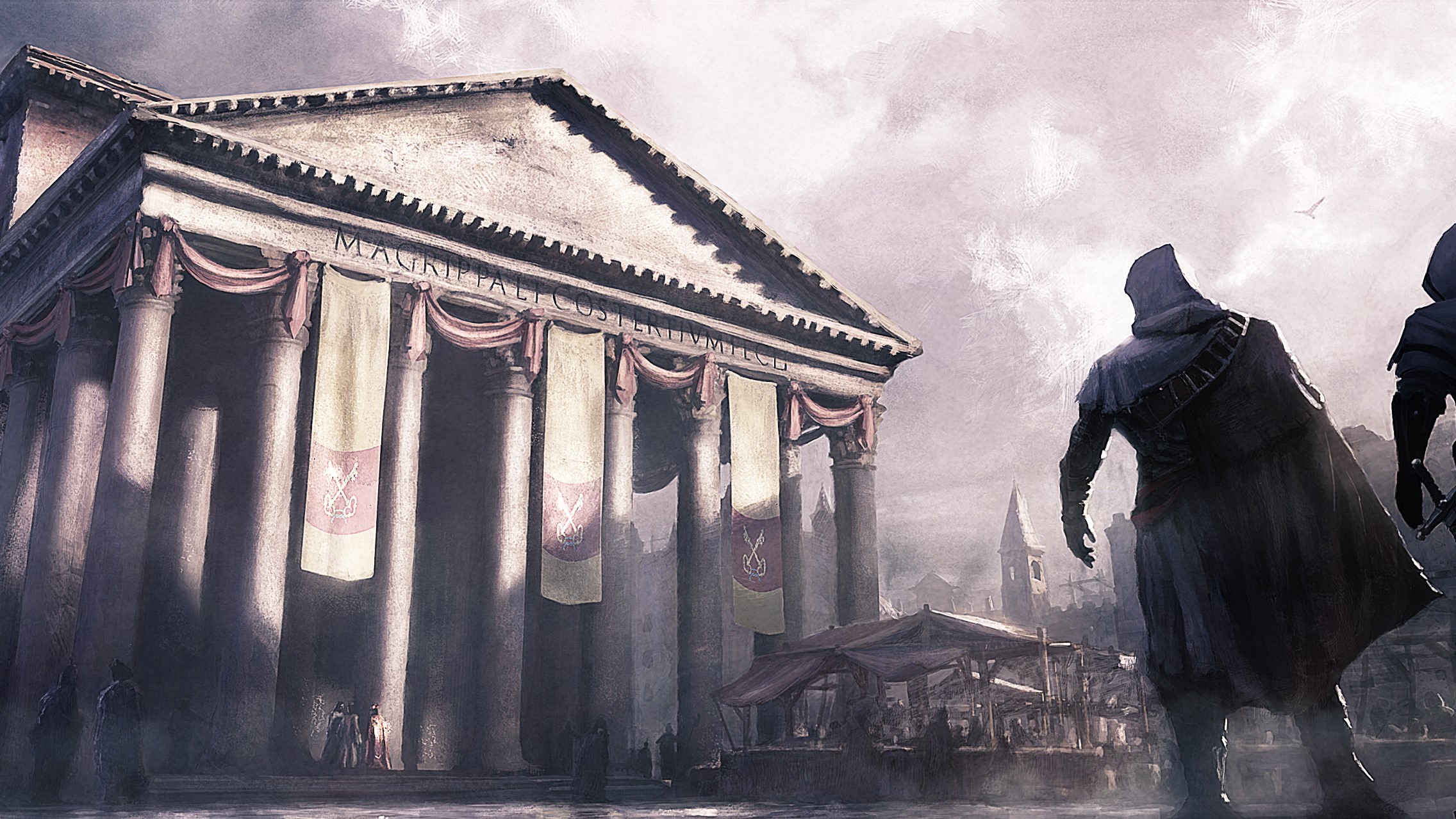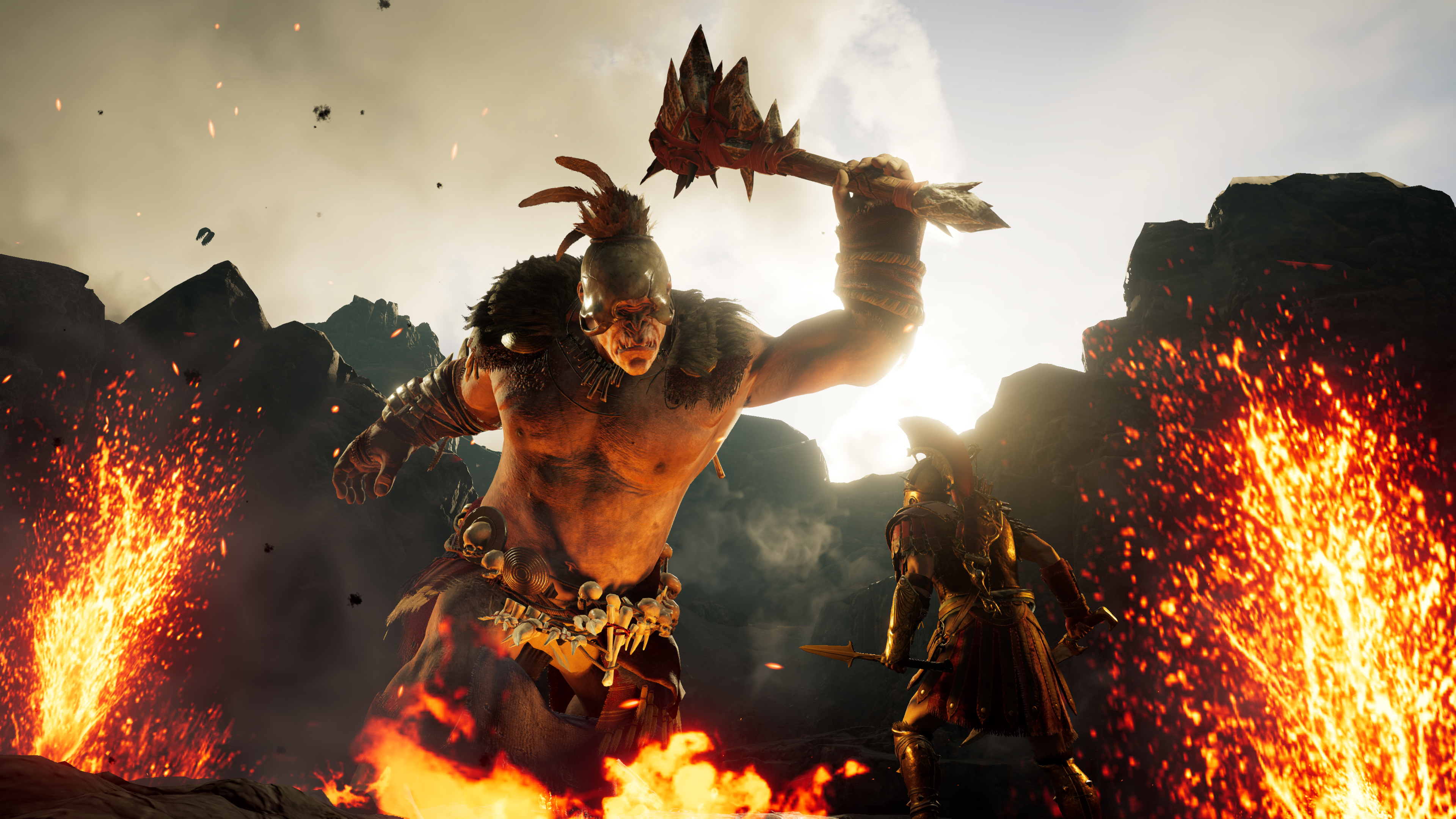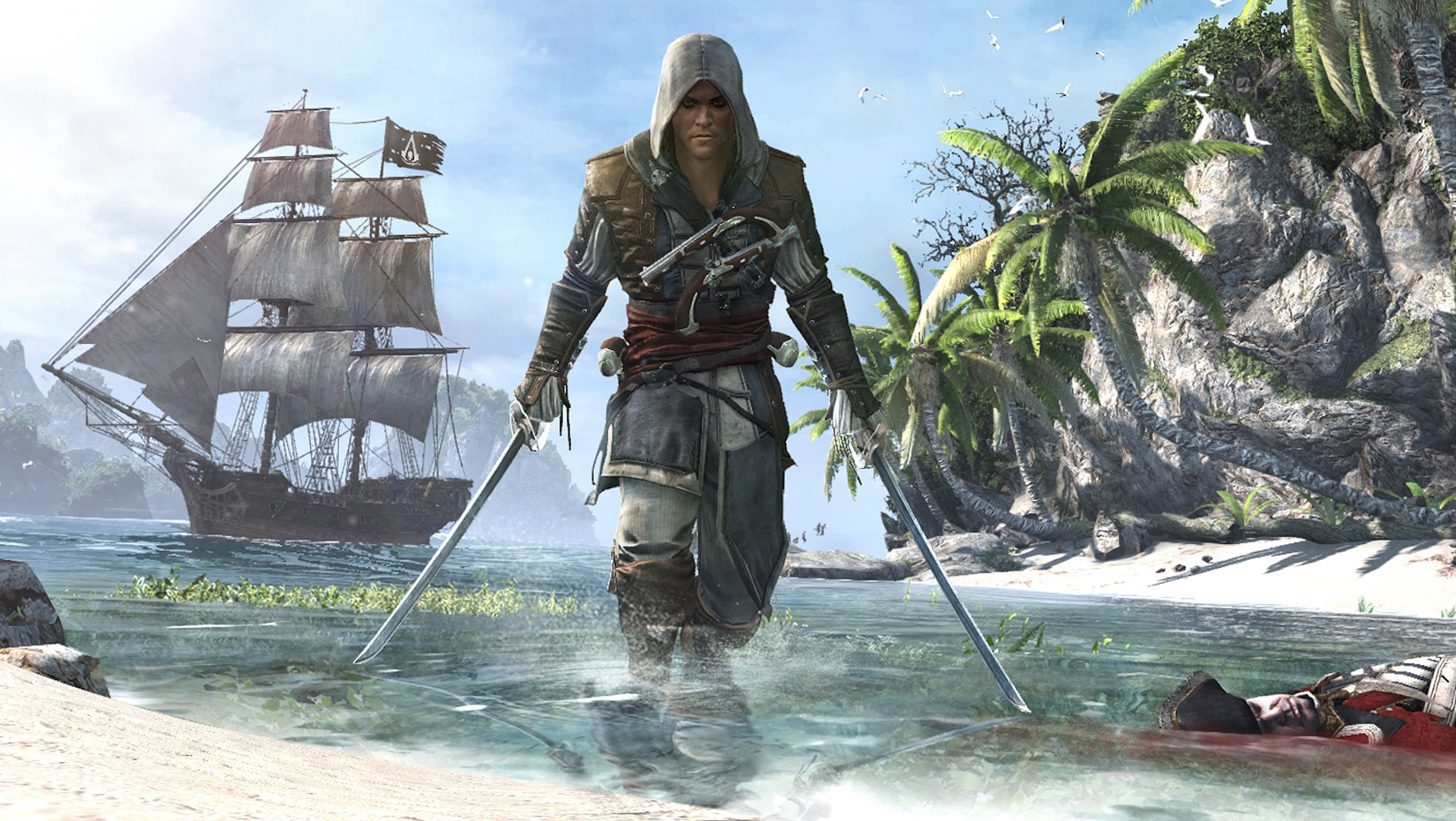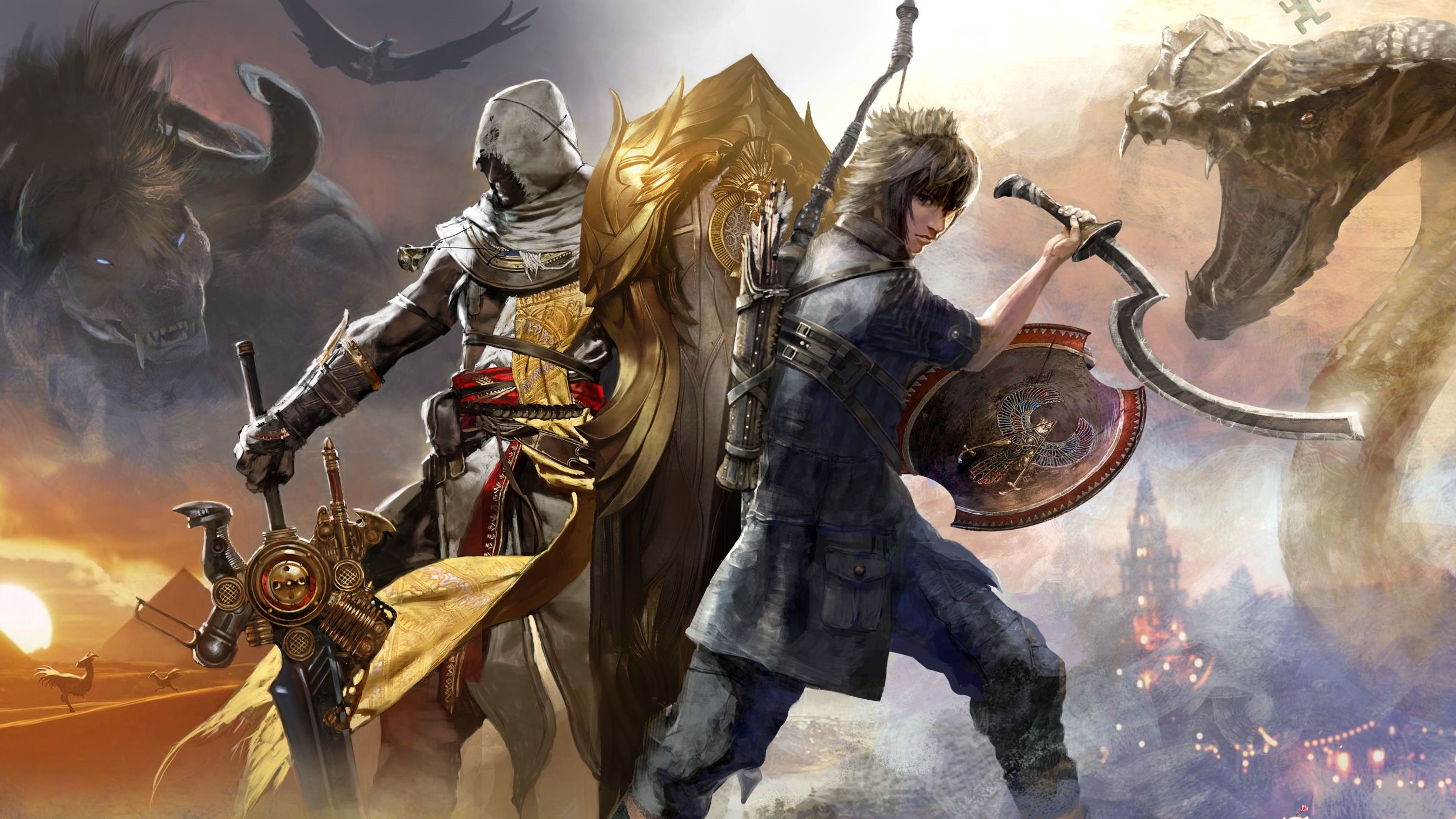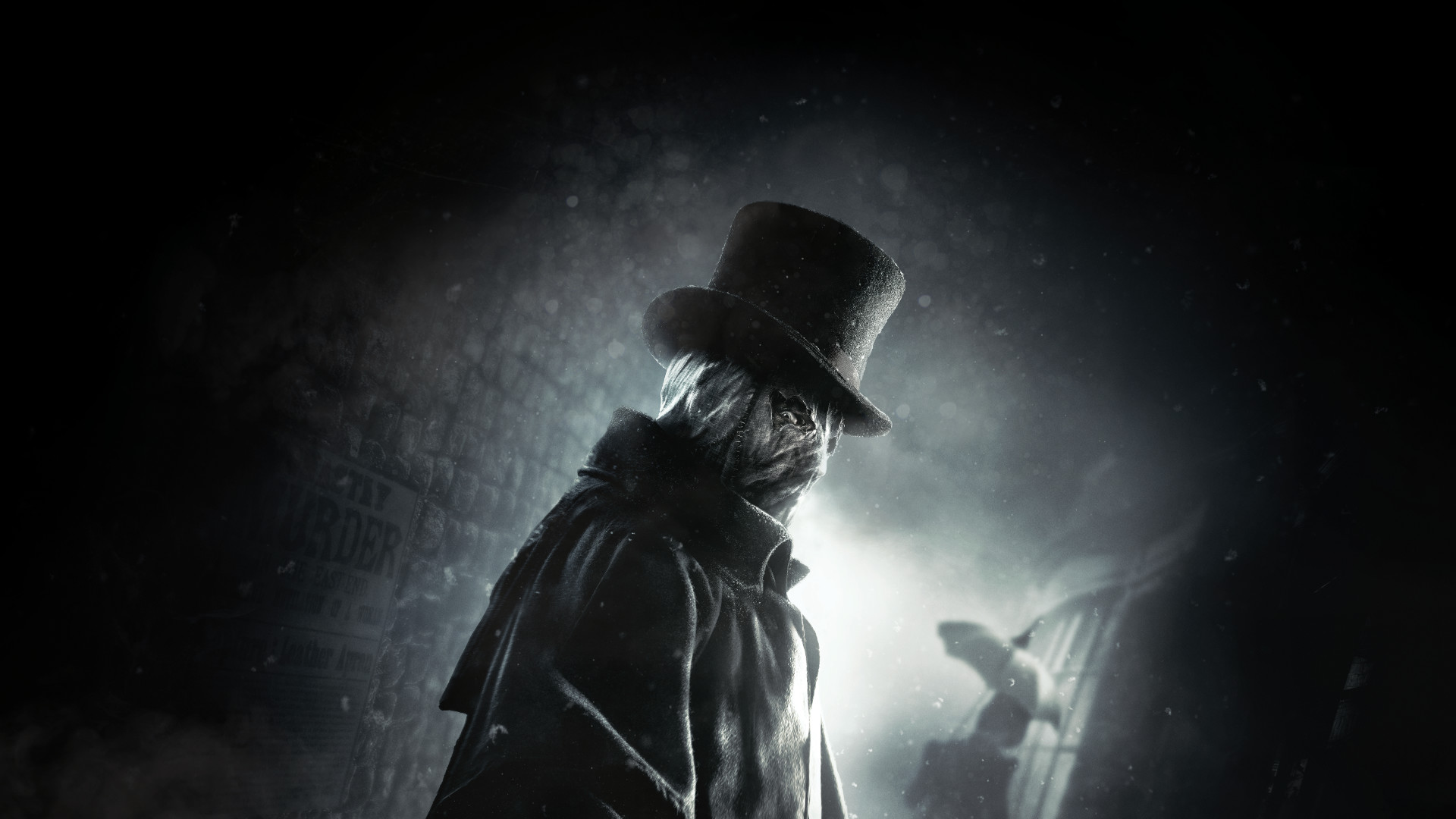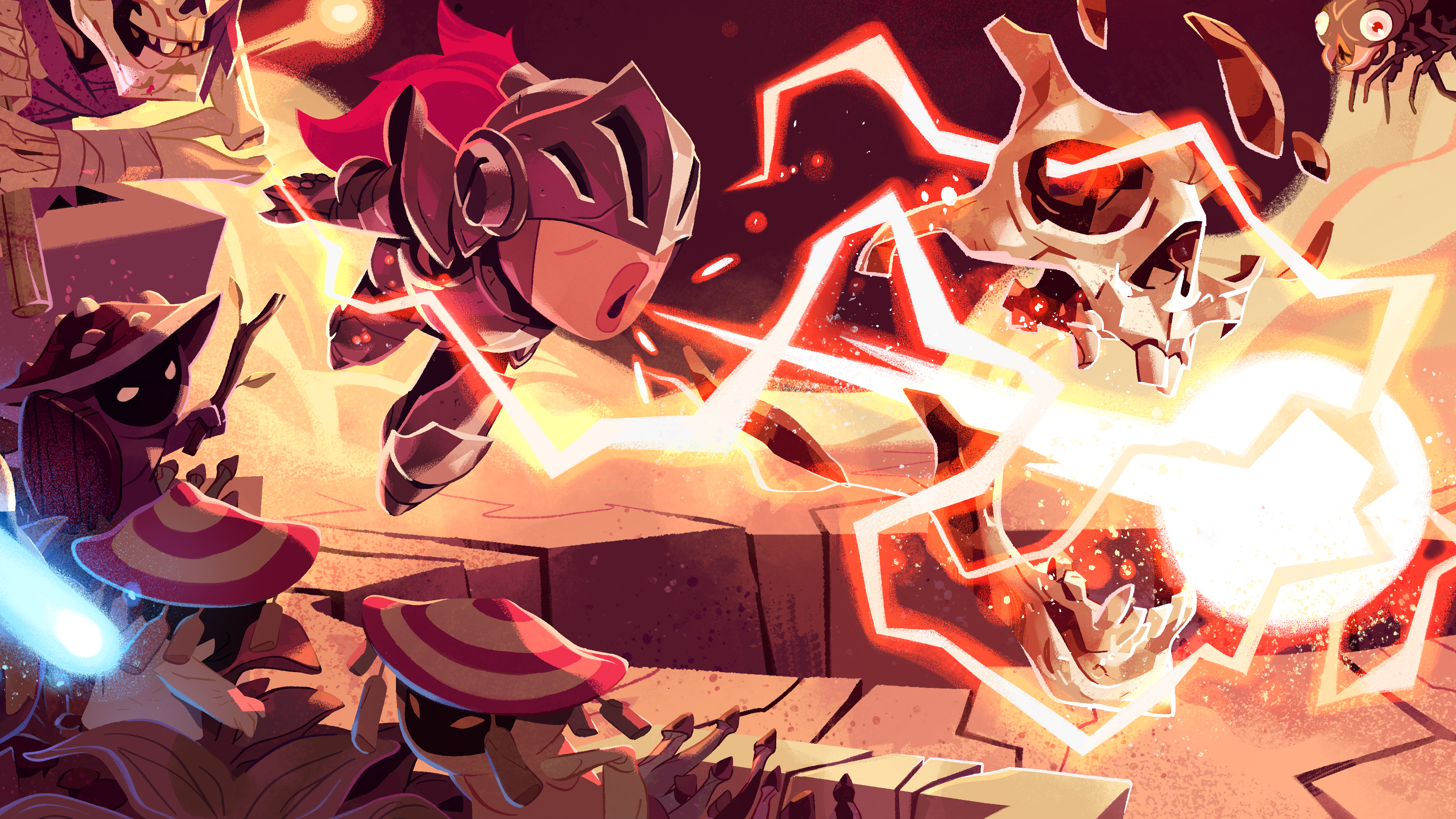The 5 most historically inaccurate moments in the Assassin's Creed series
From Pope fights to evil IT managers.
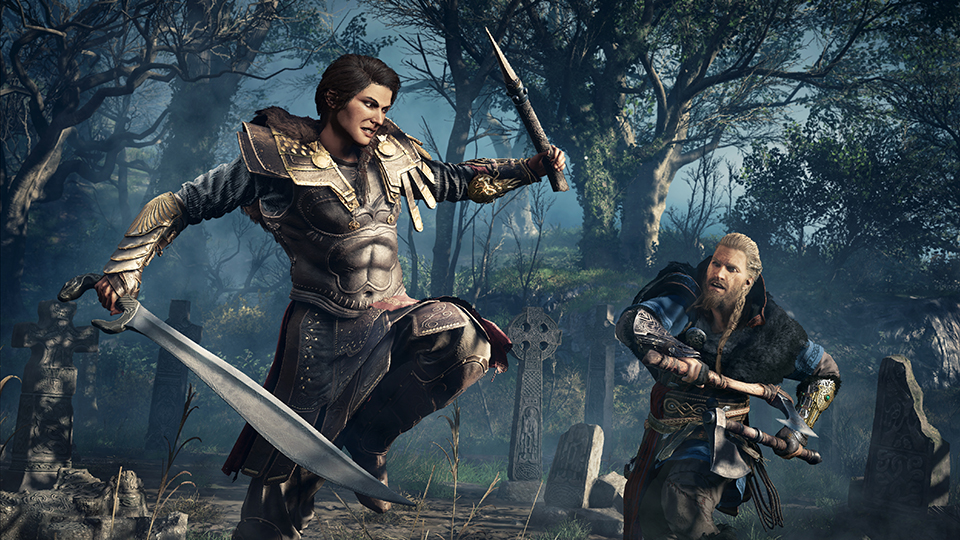
In the run up to the release of Assassin's Creed Shadows, a lot of people apparently became very concerned about the series' historical accuracy. It was a bit perplexing, because as anyone who's actually played an Assassin's Creed knows, their historical accuracy usually hovers around the same level as an episode of Doctor Who.
A sheen of real-world authenticity goes a long way, especially in the series' detailed open worlds, but Ubisoft's always treated the history books as a set of suggestions rather than a straightjacket—and many of Assassin's Creed's most memorable and exciting setpieces have been born out a bit of enthusiastic revisionism.
That makes perfect sense for a cinematic, blockbuster action game—it's there primarily to thrill, not to educate, after all. But that doesn't mean we can't have a bit of fun raking up some of its most absurd deviations from reality.
So let's take a look back at some of the series' most historically inaccurate moments—and maybe learn a little about the real events that inspired them while we're at it. Maybe.
It goes without saying but: expect spoilers ahead, for many of the games in the series. You've been warned!
A fistfight with the Pope
The game: Assassin's Creed 2
The event: In 1499, Ezio Auditore infiltrates the Vatican and has a battle with a maniacal and magically empowered Pope Alexander VI, which culminates in a knock-down fistfight for the fate of the world.
Keep up to date with the most important stories and the best deals, as picked by the PC Gamer team.
The reality: Contrary to what you might think, the Pope in this era did not get up to a lot of bare-knuckle boxing, making this event pretty improbable even before you get to the alien technology. But there are some grains of truth here.
For one, Pope Alexander VI (formerly Rodrigo Borgia) was certainly a real dog of a bloke. He reached his office primarily via old-fashioned nepotism, fathered several children with multiple mistresses while in the supposedly celibate office, and helped to enable the Spanish slave trade in the New World, among other things. So his role as a brutish villain in Assassin's Creed 2 is earned, even if he was never truly one of the masterminds of an ancient conspiracy.
The way the fight plays out—via non-lethal combat, with Ezio ultimately sparing Alexander—also respects the history to an extent. He didn't die until 1503, so while you may have wanted to put a hidden blade through his neck in that sequence, that wouldn't have fit with the facts.
Authenticity rating: 25%
Rome's secret landlord
The game: Assassin's Creed Brotherhood
The event: Over the course of the game, Ezio is charged with restoring Rome and shaking off Borgia rule by buying up pretty much every property in the city and charging rent for them. How that makes things better is a little murky, but the upshot is that between the years 1500 and 1507, one man ends up becoming the landlord of not only every shop and bank in the city, but also famous landmarks including the Pantheon and the Colosseum. He mostly spends the money on capes.
The reality: While no one man ever owned as much of Rome as Ezio did, it is true that the rich have long loved gobbling up land, charging extortionate rates on it, and then spending the profits on frivolous nonsense (though probably rare for that to be crossbow upgrades and smoke bombs).
There was also a significant shift towards what we would recognise as a system of landlords and tenants in this period, and away from more feudal systems of property ownership. Though the fact that Ezio has a genuinely altruistic mission in mind rather than just loving money blunts the historical accuracy a little.
Rome's famous landmarks have certainly also required restoration efforts over the years too, and though they were probably never up for sale to the first guy to turn up in a hood with a pocket full of florins, they haven't always been treated with the reverence they enjoy today. Not too long after the period in which Brotherhood is set, Pope Sixtus V put forward a plan to turn the Colosseum into a giant wool factory that could employ Rome's prostitutes. Sadly he died before that foolproof plan could be enacted.
Authenticity rating: 32%
All the Ancient Greek monsters were real, actually
The game: Assassin's Creed Odyssey
The event: Over the course of her travels, Kassandra encounters: three cyclopses, a gorgon, a sphinx, and a minotaur (and kills all of them). They're not even hidden, really, and they're not explained away as hallucinations or anything like that. There just were actual monsters in Ancient Greece, I guess. Even the in-universe explanation for this one is weird: they were a bunch of inexplicable genetic experiments created by the Isu purely to freak out their human slaves.
The reality: The mythology all these creatures are based on was real, of course, and Odyssey does go above and beyond in places. The names of the three Cyclopses, for example—Brontes, Steropes, and Arges—are taken from a nearly 3,000 year old poem that describes the creatures.
But, of course, we have no evidence any of these monsters actually existed, and even if we did, they seem a bit out-of-time here. Odyssey is set in 431 - 422 BC, whereas these creatures were already the stuff of mythology hundreds of years before that. Many likely have their origins thousands of years previous, before Greece itself even existed. So it's a bit like making a game set in Edwardian London and having dragons and giants wandering about—anachronistic even if you accept the fantasy.
Authenticity rating: 3%
Black Bart reincarnated as an IT manager
The game: Assassin's Creed IV Black Flag
The event: The legendary pirate Bartholomew Roberts turns out to be one of many reincarnations of an Isu called Aita, granting him ancient knowledge and strange visions. Hundreds of years later, he returns as a new reincarnation called John Standish and gets a job as an IT manager so that he can enact a sinister plan to upload his god-wife into the brain of a QA tester… or something.
The reality: Well… they at least gave Roberts a really thick Welsh accent, authentic to his real-world origins, and I appreciate that it's so strong it seems to still be fighting to get out through John's American accent.
In fact, mystic nonsense and modern day conspiracy aside, there is a lot of authentic Roberts detail in the game. He really did write his own pirate code, for example, and he did capture hundreds of ships over the course of his career on the seas. He probably was about as much of a lunatic as he is in the game too—he was apparently so confidently outspoken that he went from captured by pirates to captain of the crew within just six weeks.
It is also true that people who work in IT are usually hiding something from you and should always be viewed with suspicion.
Authenticity rating: 9%
Final Fantasy XV's Ardyn Izunia in Ancient Egypt
The game: Assassin's Creed Origins
The event: Proto-Assassin Bayek discovers a tomb in the desert where the number 15 is mysteriously marked on the wall. There he frees the main villain of Final Fantasy XV, who then has a load of swords thrown at him by a giant flying monster and teleports away into space. Bayek is rewarded with an ornate shield, a sword that looks like it has a car engine attached to it, and a frankly disturbing camel/Chocobo hybrid beast that he can ride through the rest of the game. Baffling.
Sure, maybe picking on a crossover quest is mean, but in my defence that shit is canon, and the game doesn't even warn you what's going on. It just drops Bahamut on you and expects you to figure it out.
The reality: Well, we can't prove this didn't happen, given only Bayek was witness to it. But it does seem… let's say, relatively unlikely.
There are, however, many popular theories that aliens were involved in the creation of the Pyramids, explaining their seemingly impossible construction. Could those aliens have actually been characters from Final Fantasy XV, somehow real in another reality?
No, they couldn't, don't be stupid. And there were no aliens, humans have just always been good at building things. Stop watching the History Channel.
I'm docking this one extra points because that Chocobo camel doesn't even seem biologically possible. It looks like it resents its own creation and it makes me sad to ride it.
Authenticity rating: -57%
Bonus round
Let's knock out some quickfire inaccuracies for good luck:
- Leonardo Da Vinci invented and built not only a wide selection of Assassin gadgets, but also a functional tank and a flying machine.
- Ninth century England and Ireland were littered with clumps of powerfully hallucinogenic mushrooms whose ambient spores regularly made Vikings think they were fighting werewolves and ghosts.
- Jack the Ripper's cruel and brutal string of murders were actually the result of a petty internal dispute among the Assassins.
- The French Revolution was orchestrated by the Templars, Robespierre was their sinister puppet, and the French nobility weren't so bad after all. Notably this particular inaccuracy was egregious enough for the French Left Party to label Assassin's Creed Unity "propaganda".
- The Templars initiated World War II via member Henry Ford manipulating Adolf Hitler. Roosevelt and Stalin were also under their control. But then it got out of their control, so they tried to build a time machine so they could go back and kill Hitler before it all started. You know what? I think I'm done.

Formerly the editor of PC Gamer magazine (and the dearly departed GamesMaster), Robin combines years of experience in games journalism with a lifelong love of PC gaming. First hypnotised by the light of the monitor as he muddled through Simon the Sorcerer on his uncle’s machine, he’s been a devotee ever since, devouring any RPG or strategy game to stumble into his path. Now he's channelling that devotion into filling this lovely website with features, news, reviews, and all of his hottest takes.
You must confirm your public display name before commenting
Please logout and then login again, you will then be prompted to enter your display name.
